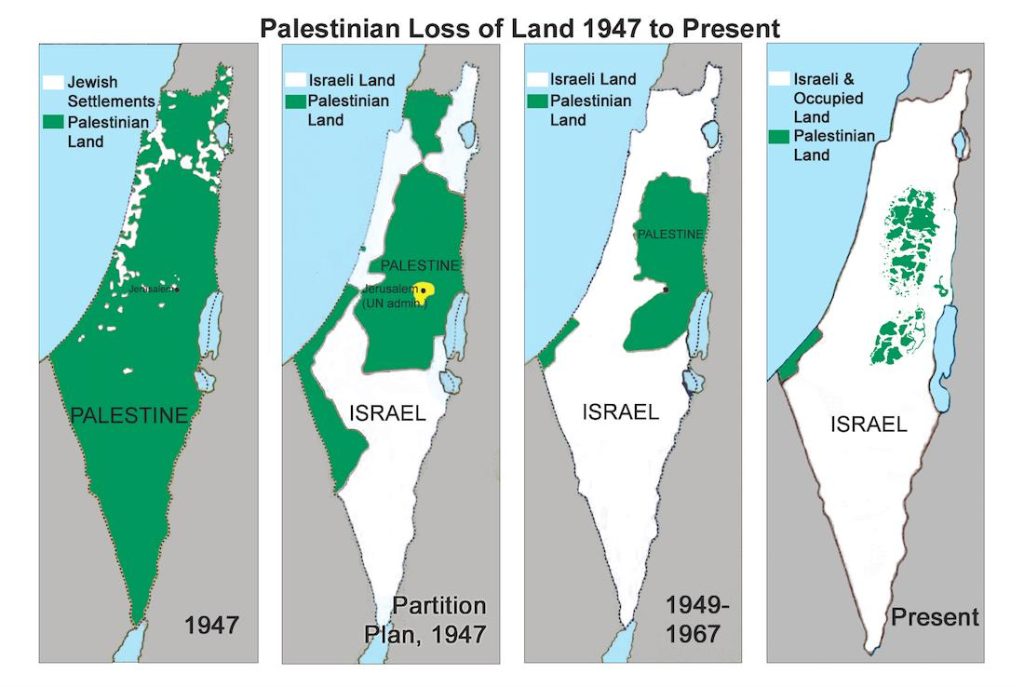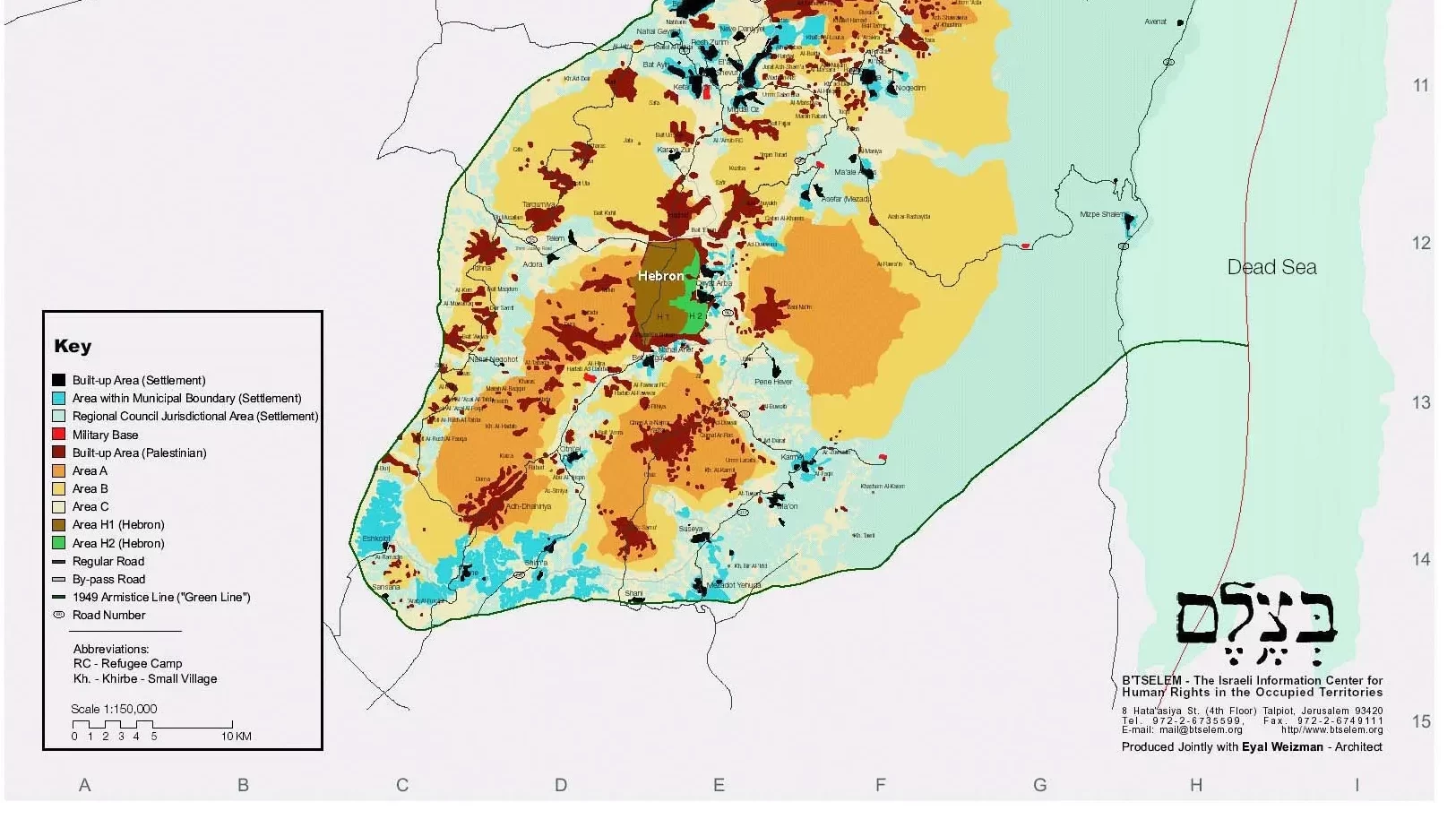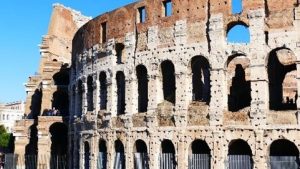Imagine living in a place where you are under the constant fear of when the next bombing will occur, is this the last time you will be seeing your loved ones, will you even have a home tomorrow? This is what every civilian with a wish to live a peaceful life in the nations of Israel and Palestine go through. Spanning decades, the Israel-Palestine Conflict has been one of the longest standing feuds in history. The situation is so geopolitically complex, socio-culturally intricate and emotionally charged that years of diplomatic efforts still have bore any method of resolution

With a death toll numbering in thousands, the story of Israel and Palestine is etched in blood on the canvas of history. Despite years of diplomatic efforts, interventions by various nations and much deliberation in organizations like the UN, a lasting solution remains elusive till this date. In the cacophony of voices on social media, blanket opinions and uniformed conjectures often overshadow nuanced and balanced understanding of this complex problem. It is thus necessary to go beyond the notions of simple right and wrong, good and bad and deeply explore the historical, geopolitical and socio-cultural factors at play in this conflict.
Ancient Origins and Religious Significance
The origins of the Israel-Palestine conflict can be traced back to a land considered holy by Jews, Christians, and Muslims alike. Jerusalem, with its sacred sites such as the Western Wall, the Church of the Holy Sepulchre, and the Dome of the Rock, holds profound religious significance for all three Abrahamic faiths. Such strong religious roots have been the cause for communal tensions in order to establish sovereignty over Jerusalem. But to understand what is so special about Jerusalem, we need to go back to the 10th century BC, to the kingdom of King Solomon.
Ancient Kingdoms and DivisionsThe ancient kingdom of Israel was ruled by the Jewish king Solomon in 10th century BC who built the first Jewish temple on the Temple Mount, which was of great religious importance to the Jews. But the first temple was demolished during the Babylonian conquest. It was later rebuilt by the Persians only to be destroyed again by the Romans. Due to this, the Jews were forced to flee from their country.
A majority of them sought refuge in Europe. But some chose to stay. Jesus belonged to one such family and chose to start his own religious teachings in Jerusalem instead of the Jewish religion which was the beginning of Christianity. Christianity started gaining popularity among the masses quickly which was detested by the Jews leading to the crucifixion of Jesus. This led to widespread negative sentiments against Jews.
Jewish Diaspora and European Persecution
On the death of Roman King Valerius in 206 BC, his son Constantine rises to power. Constantine adopted Christianity which further increased its popularity and the hatred against Jews for the crucifixion of Jesus. Thus, they start being widely persecuted and killed. Due to this Jews started migrating all over the world to save themselves, mainly to Europe.
But this was nowhere near the end to their suffering, for, in Europe, they were always treated as outsiders and second-class citizens. Being denied equal rights, opportunities or the right to own land, most of them worked as traders and money lenders. During that time, the administration of the state was heavily influenced by the church, who were against these forms of work and hence disliked the Jews. The spirit of nationalism was flowing throughout Europe as every society saw itself as a different nation, with its own history, culture and shared identity. However, Jews were not a part of this identity and we widely treated as outsiders.
Zionist Movement and the Balfour Declaration
The early 20th century witnessed the rise of the Zionist movement, advocating for the creation of an independent Jewish homeland. The First Zionist Congress was held in 1897, based on the groundwork laid by Theodor Herzl’s “The Jewish State” in 1896. Finally in 1917, in the Balfour Declaration of 1917, the British government expressed support for the establishment for the formation of a Jewish State in Palestine. The British had been in control of Palestine since they defeated the Ottoman empire in World War I which was controlling it since the 16th century.
Tensions and Communal Strife
But the Balfour declaration was in contradiction to the Skyes-Picot Agreement between the French and the British under which Palestine would be under international control. In 1922, the League of Nations, the precursor of present-day UN, gave the British complete control over Palestine, and thus there was a mass immigration of Jews in Palestine. Hence, the Jewish population shot up from just 6% in 1918 to over 33% in 1947. This mass immigration sparked many protests and created major communal tensions between the Arabs and the Jews. The Jewish National Fund started helping the Jews in Palestine financially enabling them to start purchasing land and property and thus become more powerful.
In 1936, a British commission proposed the partition the partition of Palestine into separate nations for Jews and Arabs, but the Arabs were completely against this step. To take care of their interests, the British released a new white paper proposal in 1939 which no longer argued for the partition of Palestine but stated that free independent Arab state would be created within 10 years which would be devoid of the British rule, and Jewish immigration would be restricted and eventually stopped altogether. But no such action was taken and they were not able to stop the immigration majorly owing to the horrors of the Holocaust which had forces thousands of Jews out of Nazi Germany. Thousands of Jews fled from Nazi occupied parts of Europe to Palestine. The end of second world war also marked the end of British control over Palestine and they declared that they were no longer responsible for it. But the issue of Jews and Arabs and the Palestine issue still remained to be resolved.
The UN came up with a solution wherein both the communities could have a separate state but the place which was essential to both of them – Jerusalem – would remain international. But this proposal was rejected by majority of both the communities. But despite this, a separate nation of Israel was still formed on vote of majority nations in the UN, and the Israelis began expelling the Palestinians from their land.
Arab Israeli Wars
When the British completely withdrew control of Palestine, all the Arab countries started attacking Israel. It seemed obvious that this would be the end of Israel but to everyone’s shock, Israel ended at a much stronger position than before and had now taken over many parts of Palestine, and even claimed a large part of the Egyptian territory. In the end, the Arab nations had to make a hasty retreat.
France and Egypt had built the famous Suez Canal in Egypt, but as a result of debt, Egypt had been forced to sell the shares of the canal operating company to the British Government, so now, France and UK were the owners of the Suez Canal. This Suez Canal was of great strategic importance as it connected Asia to Europe and all sea routes, including to and from Israel had to pass through here. Despite not having any stake over the Canal, Nasser, the ruler of Egypt, took a big decision in 1956, where he stated that since the Canal is in Egypt, it would now be completely controlled by Egypt, and restricted Israel from passing through the Suez Canal. This was a major problem for Israel who could now, not send any of their shipments and exports overseas.
Retaliating to this, Israel, along with France and UK declared war on Egypt and captured the territory of Egypt from their borders to the Suez Canal. In 1964, the Arab countries held a meeting in Egypt and form the Palestine Liberation Organization (PLO) which represented Palestinians at the military and political level, and its main objective was to take back Palestine from Israel. In 1967, angry with Israel, Nasser blocked the Strait of Tiran, a part of Suez Canal crucial to Israel for export. Anticipating retaliation, Nasser had already conspired with the other Arab countries and had planned an attack on Israel. But despite being up against all the Arab countries, Israel still emerged victorious and even re-occupied the region of Egypt it had taken before and even occupied some area of Gaza strip and West Bank.

Peace Efforts
But the Egyptian region was returned after the peace deal between Egypt and Israel in 1979, but there was no discussion on Palestine. In 1987, the Palestinians rose in fierce protest in what is called an Intifada. The first Intifada was sparked by the death of 4 Palestinians in 1987, but by the time it ended in 1993, over 1100 people had died and over 16000 people had been detained. After this brutal bloodbath, Palestine and Israel signed a peace deal on 13th December, 1994, under which Palestinians were allowed to govern the Gaza strip and the West Bank independently. For some time, it felt as if the wars and violence had finally ended. The key leaders of the deal were even awarded the Nobel peace prize for finally solving this decades long feud.
Rise of Extremism and Modern Challenges
But this was just calm before the storm as relations between Palestine and Israel only deteriorated from then onwards. In 1995, the Israeli prime minister was shot dead by an Israeli extremist who felt that the PM was giving their birthright, their country, to the Arabs. After this, Israeli politics became very extreme, especially towards Palestine, leading to the rise of Benjamin Netanyahu. Netanyahu pledged that no more concessions would be given to the Palestinians. Following this, Israel once again started gaining control over the Palestinian territories, using a technique known as settlements, under which Palestinians were forced to leave their homes which were then given to Israelis. By 2022, only certain parts of the West Banks were truly under Palestinian control.

A major reason stated by Israel for its extreme measures was Hamas, an extremist Palestinian organization declared by many major countries as a terrorist group. This group had further complicated the image and representation of Palestinians in the world. In Palestine, Hamas and Fatah were the two major political groups that existed. Since 2007, Gaza was ruled by Hamas while Fatah led the Palestinian Authority, the organization which governed the west bank. But despite both organisation being from the same nation, they were poles apart in terms of their policy towards Israel. While Fatah was willing to recognize the state of Israel and clearly demarcate the separate territories of both nations as per the 1967 border, Hamas wanted to completely end Israel and wanted the entire territory for Palestine, an aim for which they often resorted to violent measures. Such activities of Hamas fuelled extremism in Israel where many people believed that peace was not an option any more. Due to these differences, there also had been much conflict between Hamas and Fatah, which resulted in a civil war in 2006 when Hamas won the elections, but refused to sign a power sharing agreement with Fatah.
Diplomatic shifts
Due to its violent nature, Hamas was slowly losing support of the middle east Arab nations. In 2017, Saudi directed Qatar to stop supporting Hamas. Due to this, Hamas finally accepted the partition based on 1967 borders in 2017. But even this agreement could not broker lasting peace between the states. Till this, violence ensues between Hamas and Israel and the question still stands, “Who will get control of Jerusalem? And who will get their land back? And will there ever be an end to this violence and bloodshed.”
ARTICLE BY – Karm Dave | Writer @ The Social Digest



